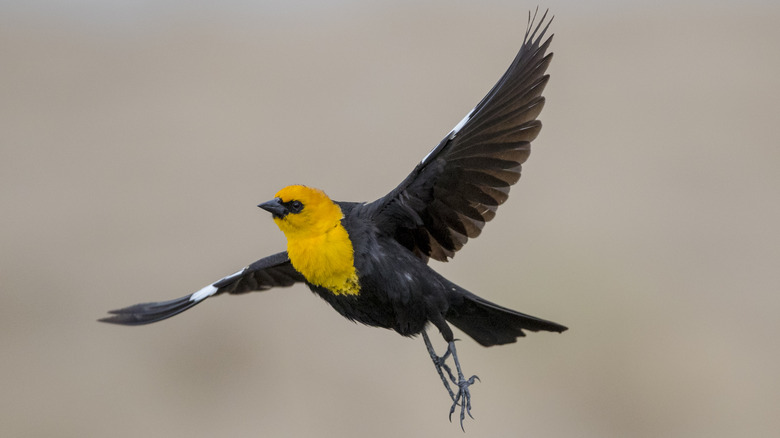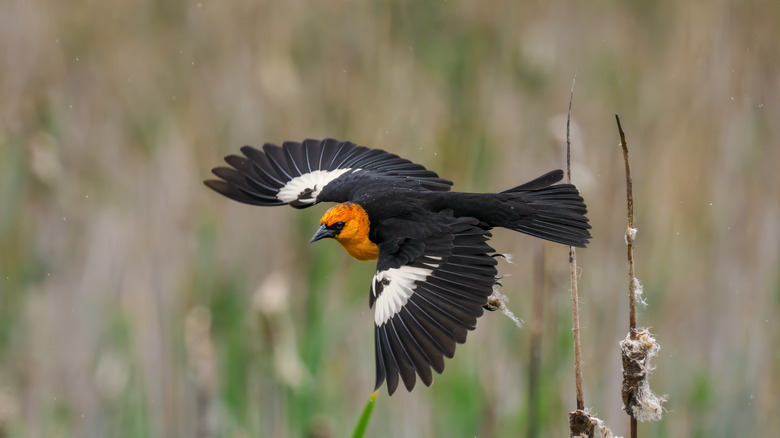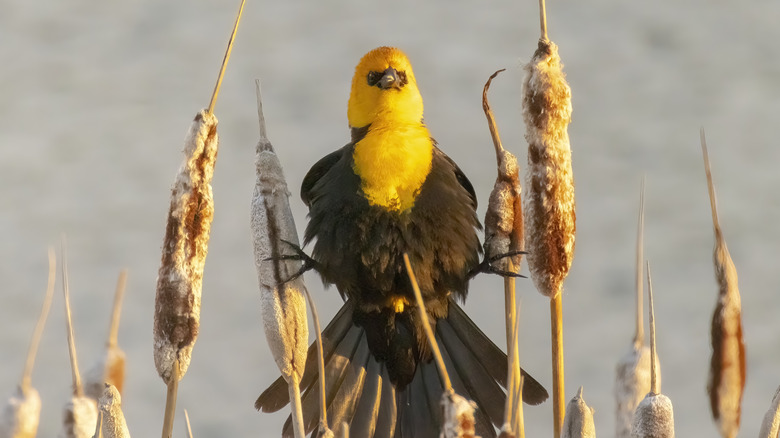The Striking Yellow And Black Bird You Might Be Seeing If You Live Near Water
The next time you visit your local pond or river, keep your eyes peeled for these striking yellow and black birds. Yellow-headed blackbirds are commonly found in the wetlands of North America in the summertime. These birds have a distinctive color contrast and an unusual song that is sure to get your attention.
However, their most impressive characteristic of all is their ability to remove insects from their environment. If you have a body of water on your property, these are the types of birds you will want to have visit. Yellow-headed blackbirds eat all kinds of bugs attracted to water, so if you've got a pond that's overrun with insects, you'd be lucky to have a flock of these birds pay you a visit. Let's get into the features and behaviors of these striking birds and how you can help them thrive in their habitat.
Here are the features and unexpected benefits of yellow-headed blackbirds
As their name suggests, yellow-headed blackbirds are characterized by the golden-yellow color on their heads. Contrasted with their jet black bodies, these birds are easy to spot in nature. They also have stunning white markings on their wings that are visible when they fly. The males have much brighter yellow heads than the females, and females typically have brownish bodies instead of black.
If you have red-winged blackbirds in your area, there is a good chance you will spot yellow-headed blackbirds in their company, as these bird species thrive in similar habitats. Oftentimes, they are found in the cattails, reeds, shrubs, and small trees around marshes, rivers, and ponds in western and midwestern regions. The presence of yellow-headed blackbirds changes from year to year depending on environmental conditions like drought and heavy rains. The males have a very unique song that sounds like a "heavy door swinging on a very rusty metal hinge," according to the Cornell Lab of Ornithology.
These birds play an important role in controlling insect populations. Their diet consists of bugs that are commonly found on and around the water's surface, including flies, spiders, ants, dragonflies, beetles, and grasshoppers. After the summertime, yellow-headed blackbirds migrate to fields to feast on weed seeds and grains.
How you can help yellow-headed blackbirds thrive in the wild
Although the habitats of yellow-headed blackbirds are plentiful and their population is not under threat, these birds face considerable obstacles that can put their lives in danger. Thankfully, there are several ways to help birds thrive, especially if they like to visit your property.
Their survival is dependent on the conditions of local wetland habitats. For example, irrigation and drainage projects to manage floods may lower the water levels and, in turn, threaten the species. The birds may also accidentally ingest pesticides, especially when foraging in fields during the cooler months.
If you have a large property with fields that may be a food source for yellow-headed blackbirds, avoid treating your crops with substances that may be toxic to birds. Alternatively, if you have a pond or small body of water on your property — especially if you live in a rural area with a lot of undeveloped space — consider planting some wetland vegetation such as reeds, bulrushes, reeds, and willows. By creating a welcoming environment for nesting and foraging, you can help yellow-headed blackbirds play their part in the local ecosystem.


